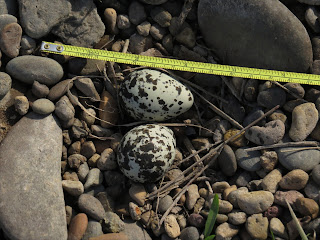Before that, wallpapers were slideshows, but that is an historic, and also somewhat biographical, note. But that is for another post, along with that workstation name, which rolls from machine to machine as technology improves.
I could leap from this to some ranty post about why various sorts of hamburger, skate boards, etc., are not awesome. That, too, should be in another post.
I find myself rather sad this morning. Last night I was looking for a bit of imagery related to the UA Mirror Lab.
I've mentioned them over at G+. They are currently producing optics for another European effort, the Large Magellan Telescope. No link there, because I just found them trying to do some highly obnoxious Web tracking, involving HTML canvas. That might be another post, but one more suited to
my security blog. Some days, the sadness just piles up.
On a brighter note, I found what I was looking for (and much more) by stumbling across, then doing a
topic search, on a great blog.
GMT4 Unveil, about casting the 4th GMT mirror. Here's
the time-lapse video, on YouTube, but you should really read the blog post, and follow the link from there. Casting an 8.4 meter mirror -- a process which takes months, even at what is unquestionably the finest large-scale optical fabrication facility in the world, is a nontrivial process.
So, why so sad?
Because in the course of checking out that great Ketelsens blog, I found a couple of things. One was a mention of Bob Goff. That name rang a bell -- he was a friend of a friend, years ago. Now dead at an early age, as is the friend (Larry Forrest, founder of since-sold Glass Mountain Optics) who used to mention him. Larry died unexpectedly, also before his time. He and Sharleen, his wife of many years, Forrest are two of the finest people I have ever known. Notice my use of the present tense for Larry. That is intentional. In ways that seem important to me, Larry is very much alive; he's just impossible to contact. Which sucks, but there it is.
In addition, the Ketelsens Blog mentions yet another person who has passed far too early,
Dave Harvey. They both worked at Steward Observatory, but Harvey was on the software development, as opposed to the optical fabrication, side of things. He apparently regarded himself as more of a photographer. This guy, I can only wish I had had some connection to. Yes, I would be even more sad right now, but I still feel that that was a connection I missed out on, to my loss.
When I was a child, I messed around with telescopes. No surprise, right. I was mainly interested in the structure of our galaxy, probably because some of the more spectacular sights were accessible to my small telescopes -- the classic 6-inch f8 Newtonian reflector I owned at the time was very mainstream. And even then, what we were learning about something like the structure of the galaxy, or establishing the distance scale of the universe, set the standard for what might be regarded as awesome. An awesome hamburger? Yeah, right. Awesome was a reserved word for me before I even hit my teens, and this not subject to change. Period.
So here's this Dave Harvey guy, also a telescope and software guy, who is using small but drool-worthy gear to photograph to take some fantastic imagery. Such as the
Rho Ophiuchus region (Go there. Really. He did it with a 5-inch astrograph.) of the Milky Way, the subject of another long-term wallpaper on feynman. He was also a general-purpose photographer who was deeply knowledgeable about his craft, and who put in a lot of effort to get things right.
I loves me some birds. Always have. But there are a lot of bird blogs out there by people who do a lot of photography (with far better/heavier/bulkier gear than I am willing to carry) who seem more interested in being cool. I have no firm idea of how birding might be seen as cool, seemingly by the same people who might judge that a hamburger could be in any way awesome, but I digress. More importantly, they don't seem to get things like the time-honored wisdom of 90% of all images needing a border. Or they simply can't be bothered.
In the few images I have ever posted, anywhere, I have tried to follow that rule. But sometimes I got in a rush, or simply lazy, and didn't. I suspect that it would not even have occurred to Dave Harvey to do such a thing. That, my friends, is attention to detail, and dedication to your craft. So Dave Harvey is still around, too, if one appreciates the debt we owe to all of those who teach and inspire.
There is no deep wisdom, now becoming obvious, in all this. At some level we all realize that associating ourselves with smart, dedicated people, who are also willing and able to teach something of whatever it is that they do, is a useful guideline. But it was one of those weird moments, which we probably all have, when many seemingly-disparate things all became connected.
So why even write this?
Two reasons.
- The off chance that it might be my subconscious getting impatient and shouty. Which does happen to me. For instance, I have had great results from "sleeping on" problems.
- Spreading the word about outstanding work by others is always A Good Thing.







